There is no doubt that the world of Artificial Intelligence has arrived and is here to stay and there is just beginning to appear a variety of AI Art themed Tarot card decks that have begun to show up on Amazon, Etsy and Kickstarter shelves. There can be no argument that the results are visually stunning, if not mind-bending. As AI art generating programs evolve, (and dare I say learn?), so does the controversy surrounding AI and copyright and the death of the traditional art form.
Artists, and I mean traditional artists, have much to say about the presence and perceived threat to the art world that AI art poses. Type A.I. + Art into Googles search engine and it will produce results that include Artificial Intelligence Art generators and artworks produced by apps, but it also returns information about contemporary Chinese artist, Ai Wei wei, whose art work and sculptures are known for their political and societal commentary.
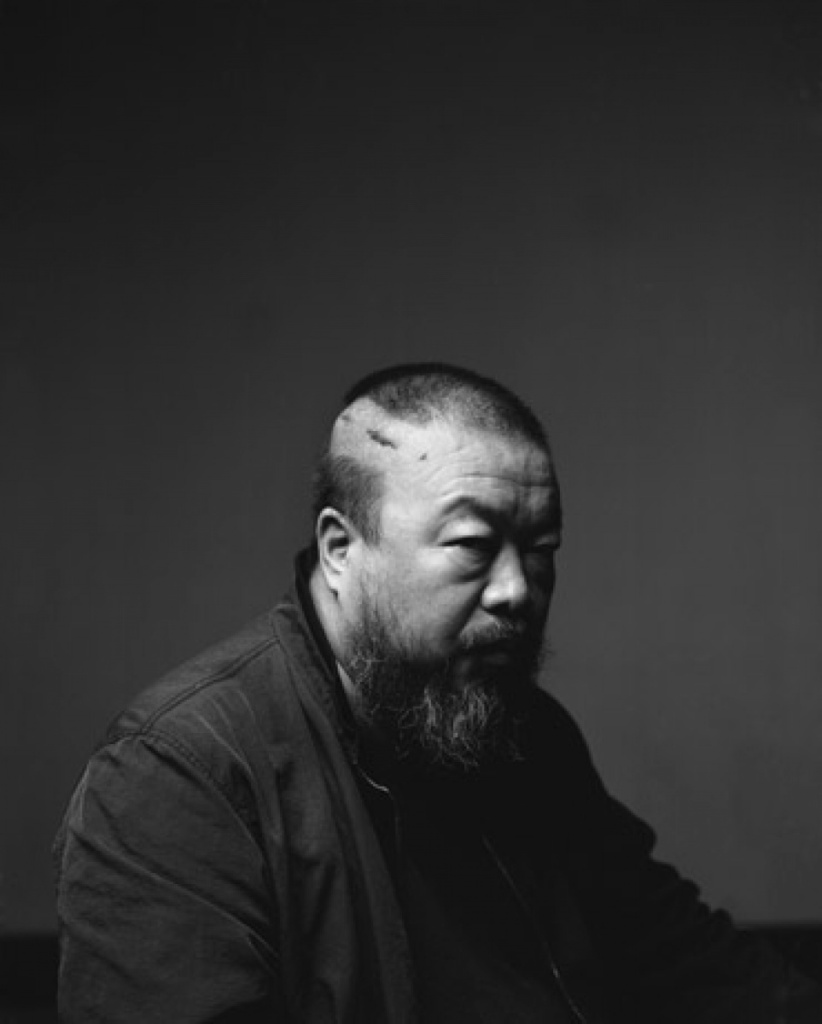
While AI artwork is largely two dimensional, Weiwei’s visual art pieces are often sculptures that are as thought provoking as he is controversial and his creations attest to the need for art to reflect what matters most to the artist.
Weiwei is first and foremost a political activist who began speaking out against human rights violations in China using the internet and a blogging website. The censorship of his criticism of the Chinese government and subsequent incarceration became the fuel with which he made creative fire. Using a variety of media, he created sculptures and paintings that stood as silent protest against a cruel and totalitarian regime. His art was not only a window into his mind, but also his heart and it spoke about the dark night of the soul he experienced at the hands of the Chinese government from the time he was an infant when his family was forced into a labor camp for his fathers anti-government activities.
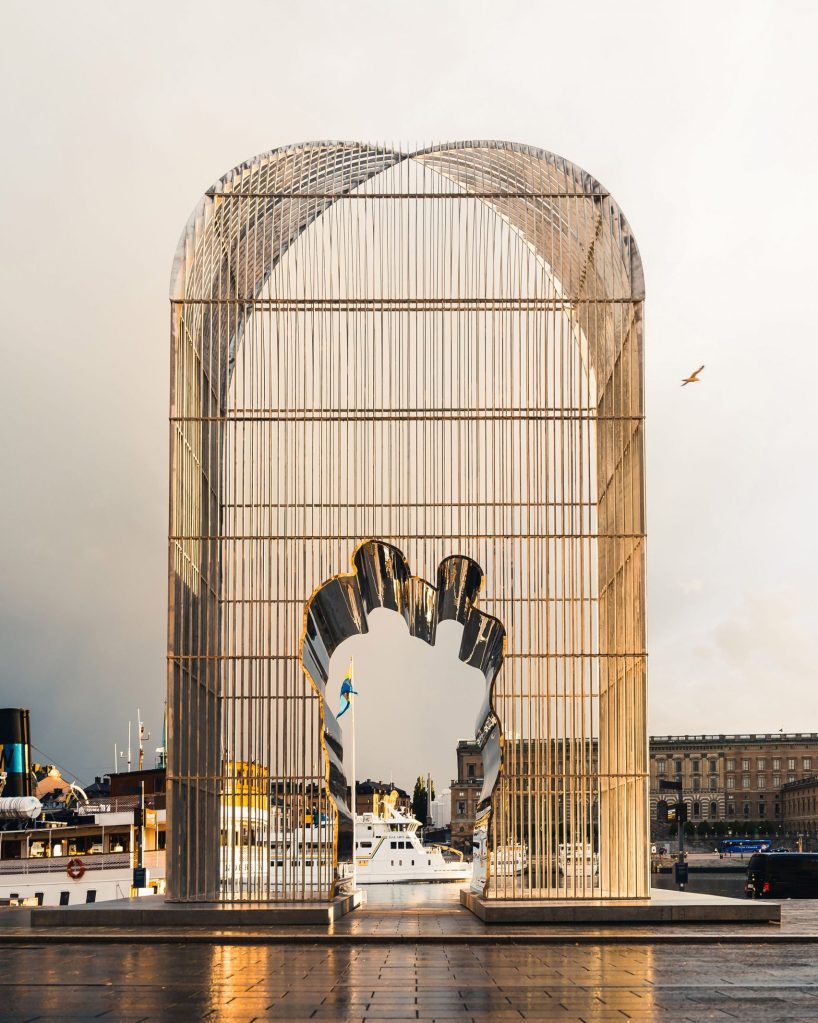
An image or sculpture is nothing if it doesn’t speak to the artists experience and their desire to bring that to a larger audience. After all, why do we need art? If it is simply for the pleasure of the eye and the color schematic that matches well with the decor, then artists would have no desire to create anything, and we would have no opportunity to enjoy it. Like poetry, art evokes an emotional response, and that response gets us thinking, and in the company of others, it gets us talking, which is what our society needs in order to continue to thrive and grow.

Weiwei’s work brings attention to social injustice from his own cultural perspective and displays it to the larger worldwide audience; those who might never have known his subjective experience of history if not for his works and the pain and anger that created them. Ai Weiwei samples experiences, emotions and the contextual political narrative to create something unique and paradigm altering, and people love the artist as much for his moral compass as they do for his ability to create controversy. Many of his pieces are often critical of our vast amount of waste and things and the greed that creates it. Many show how the art and craftmanship of the creator has been lost to automation and mass production.
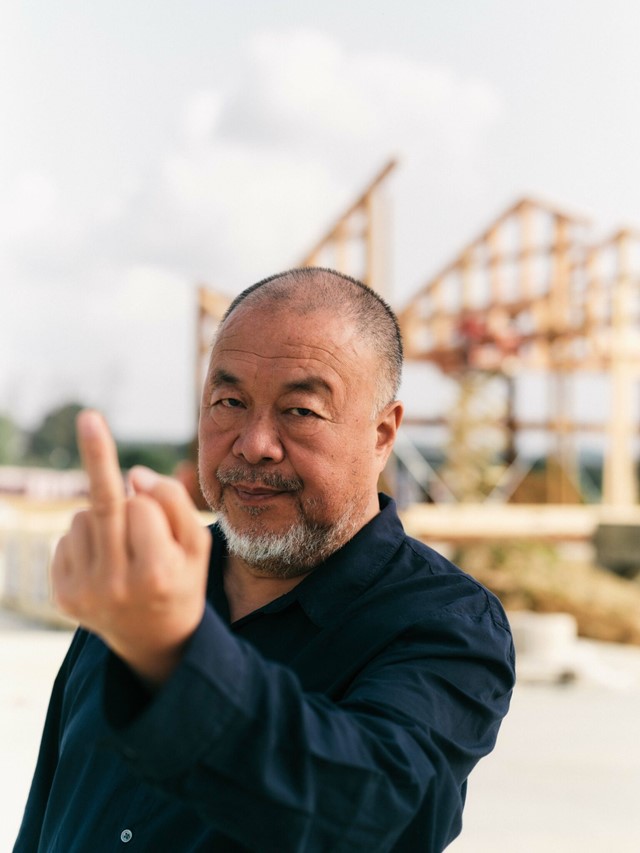
This brings me back to the subject of AI art and specifically Tarot Art (because this is a Tarot Blog, after all). Artificial Intelligence art programs for the uninitiated, take existing images or phrases or keywords typed into the program to use as a reference to gather and amalgamate images sampled from all over the internet into an image that depicts what is written. There is increasing criticism in art, academic, and computer science circles surrounding how images are generated, as outputs are generated in a style using existing artwork, photos, and graphics that would be considered copyright protected. An excellent article you can read on copyright infringement here explains the how and the what of the problem, that being: how much of an original artwork can be reproduced for it to be illegal? My goal here is not to enter the copyright debate but to look at the value (or lack of value) of using AI generators to create an artistically based product. Tarot is a tool, and the value of that tool is in its imagery (there are no blank tarot decks for a reason!). To understand the process for myself, I used a couple of programs to play around with and got some amazing results (programs used were Wombo and Photoleap AI):
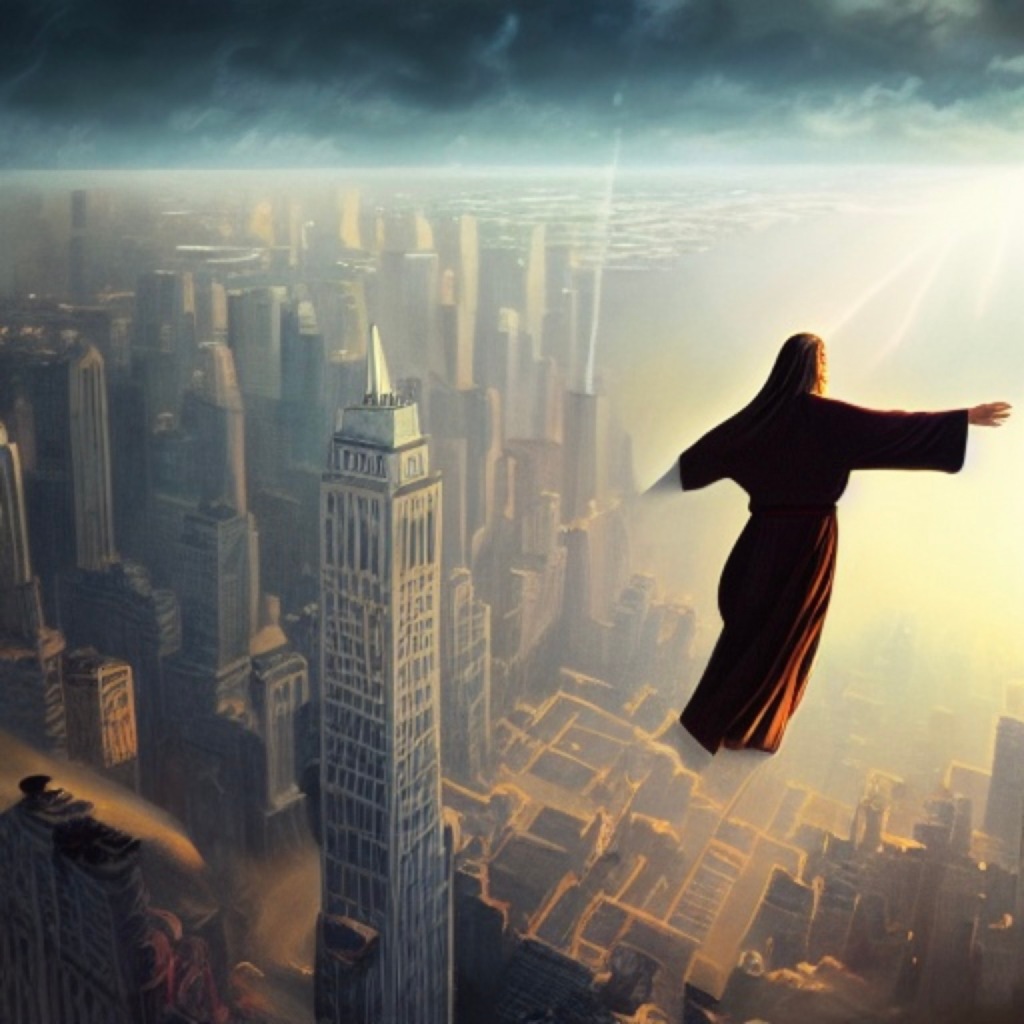


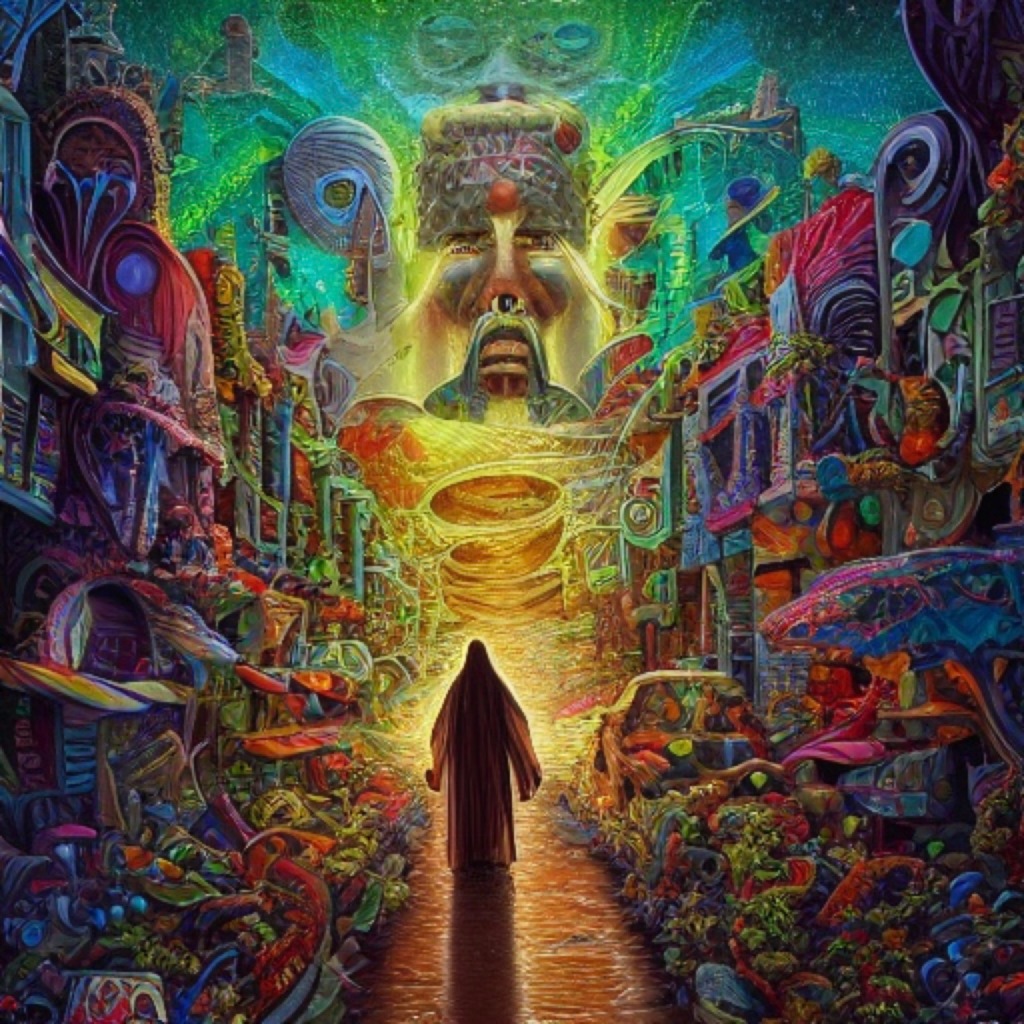

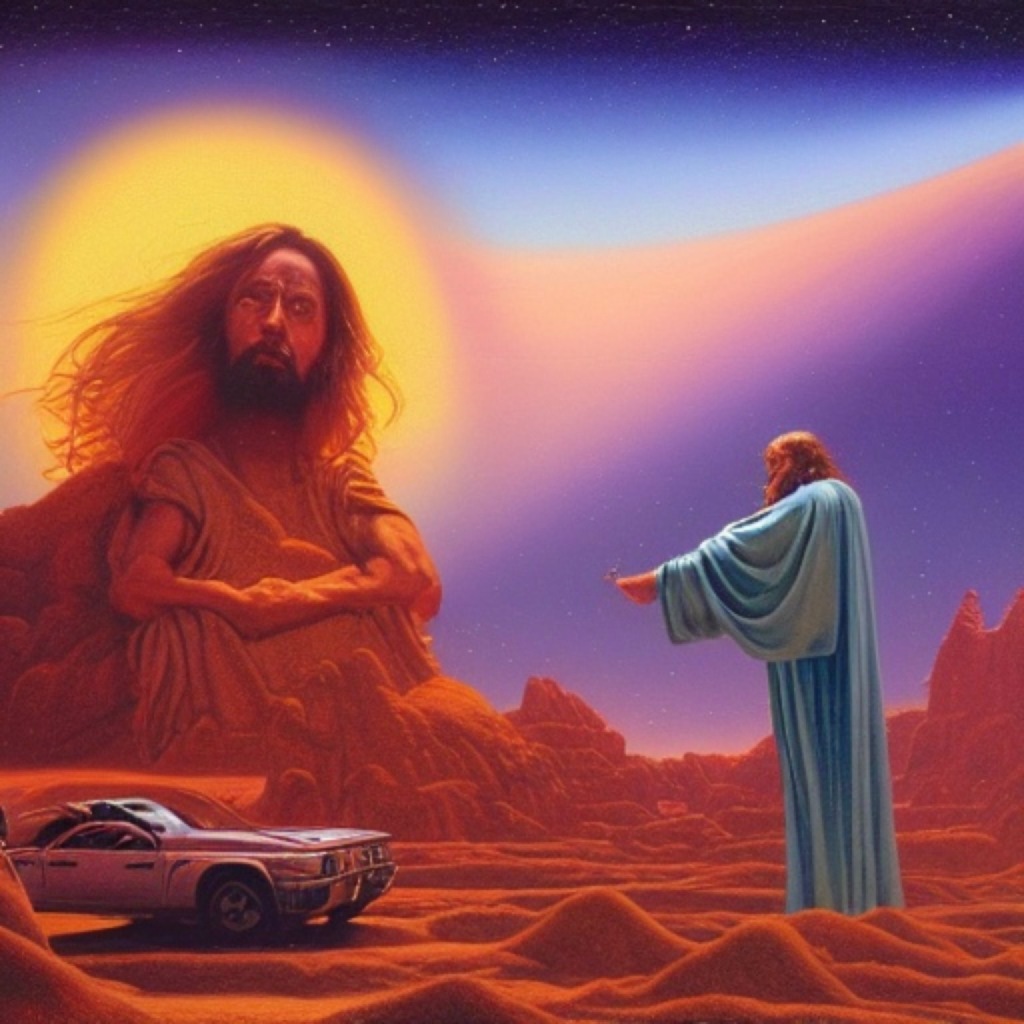

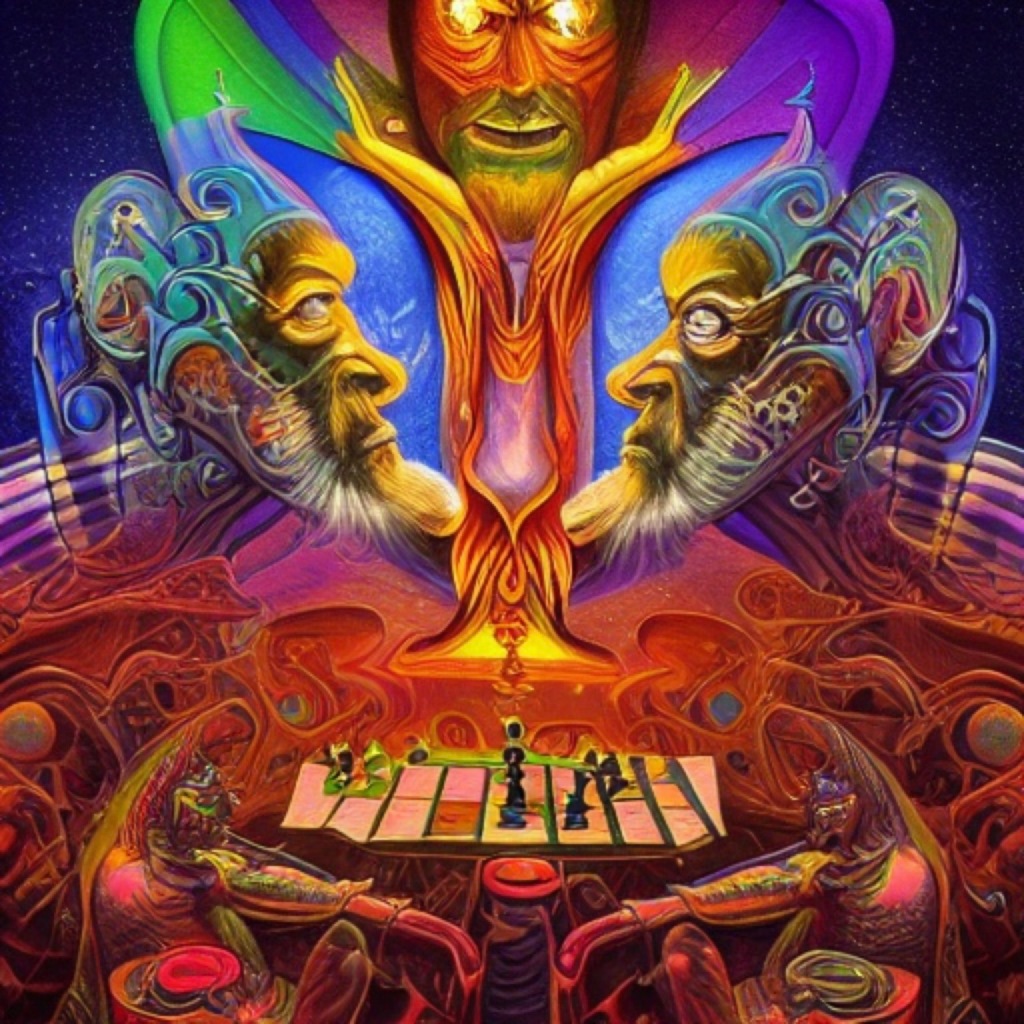
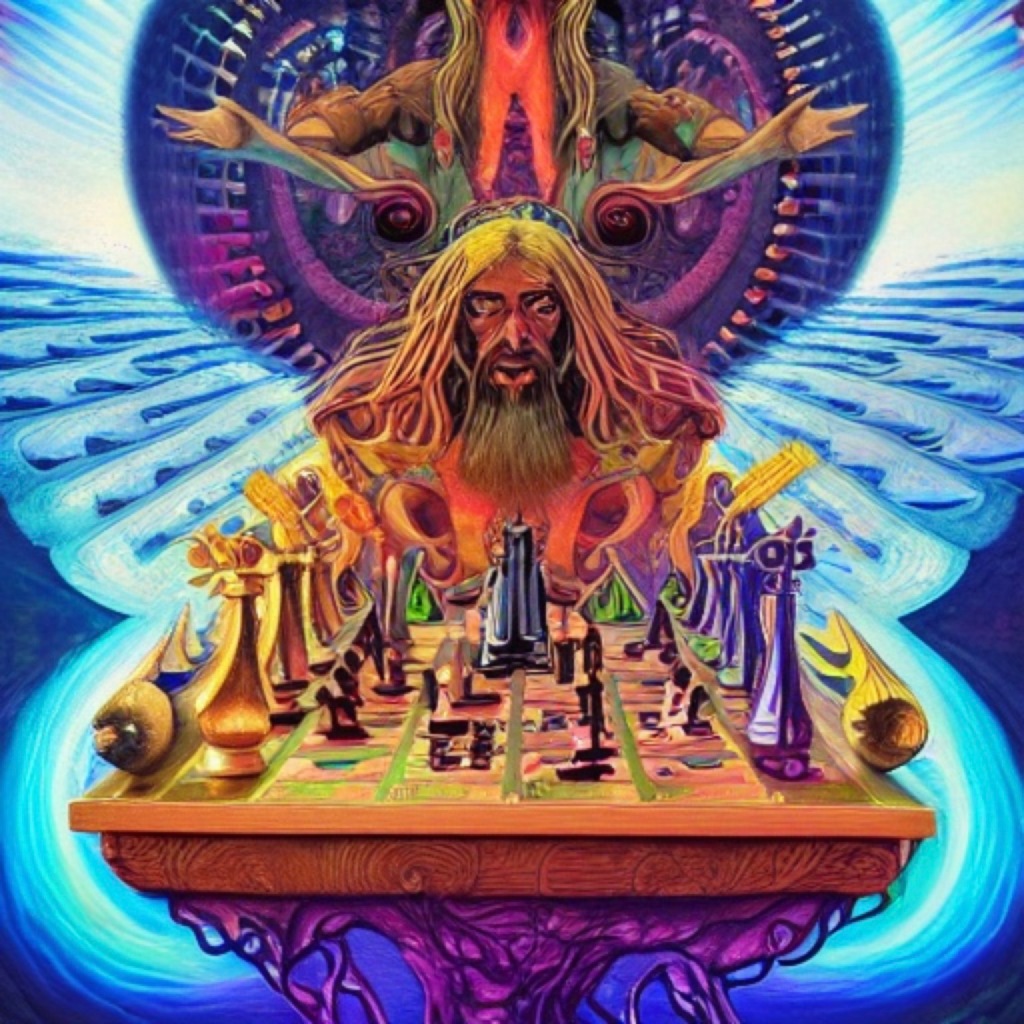
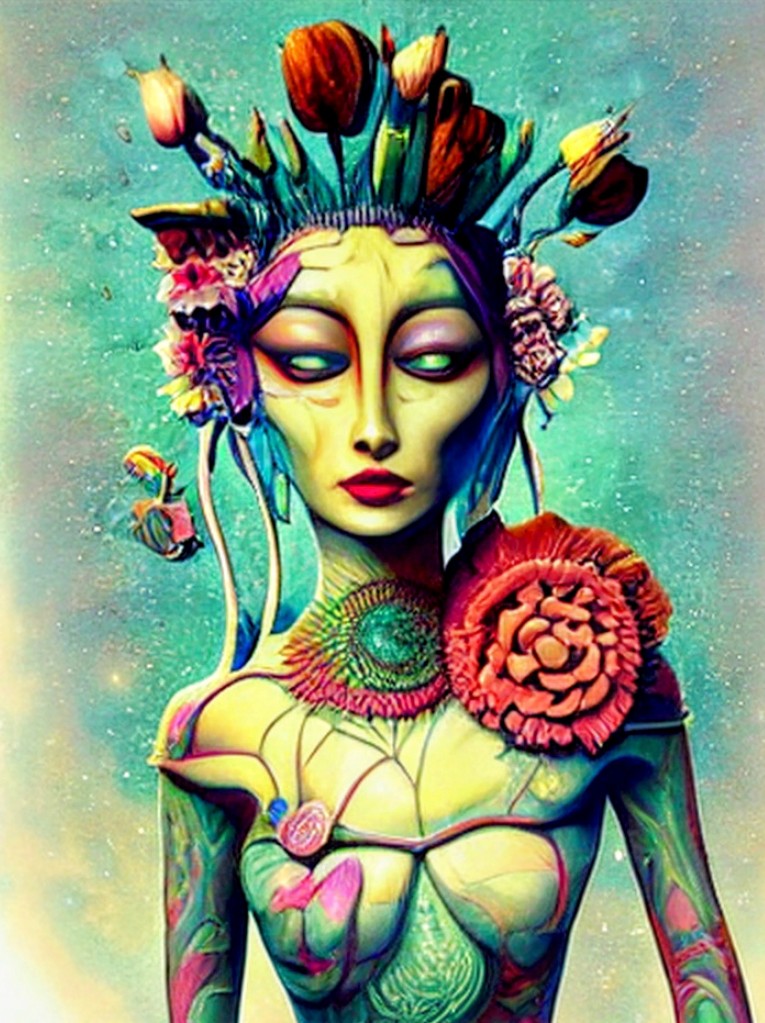

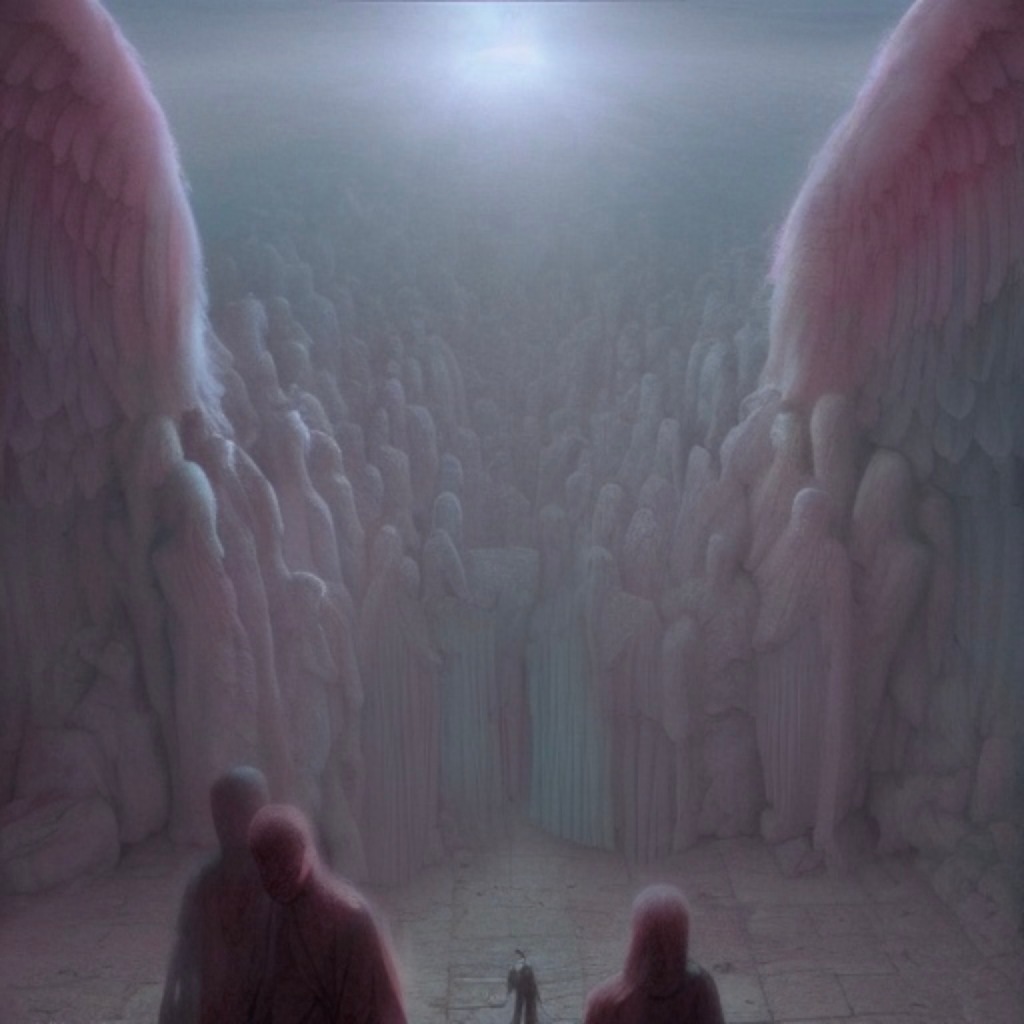

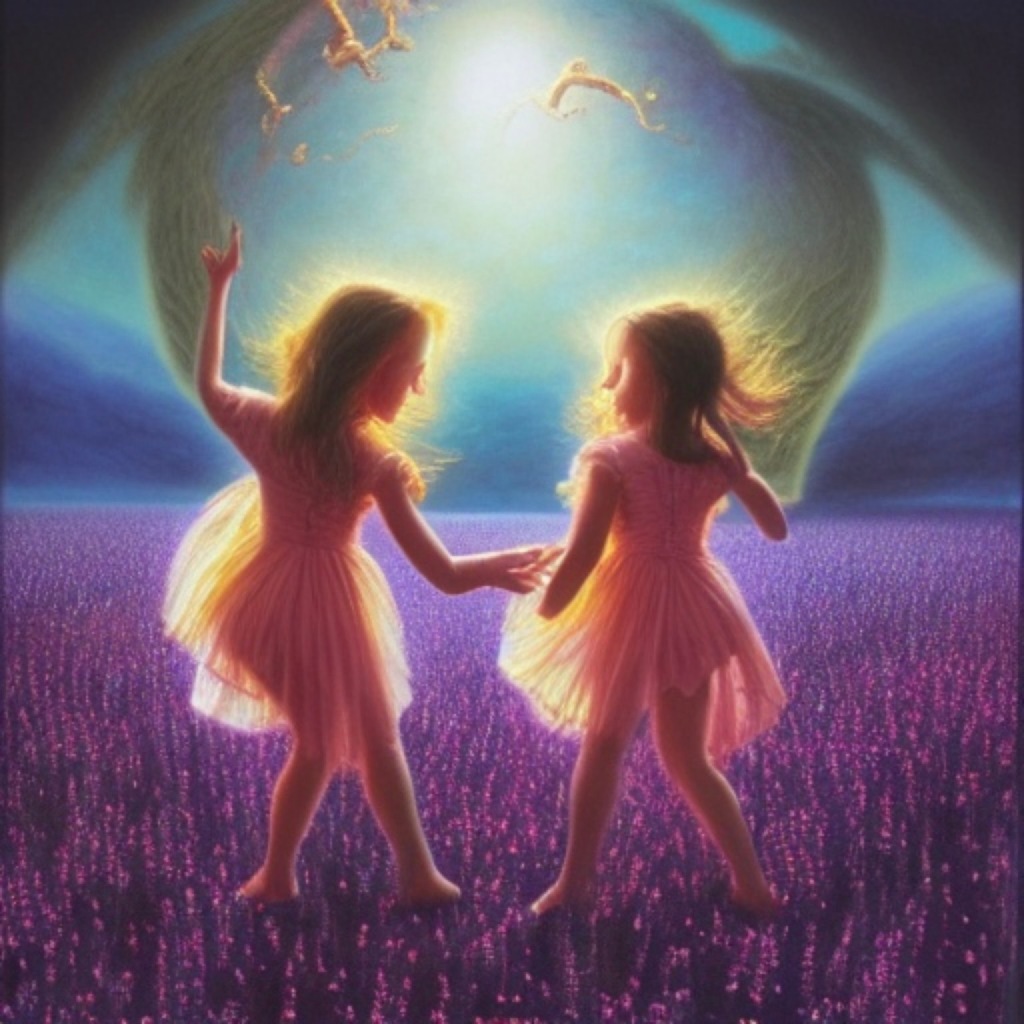
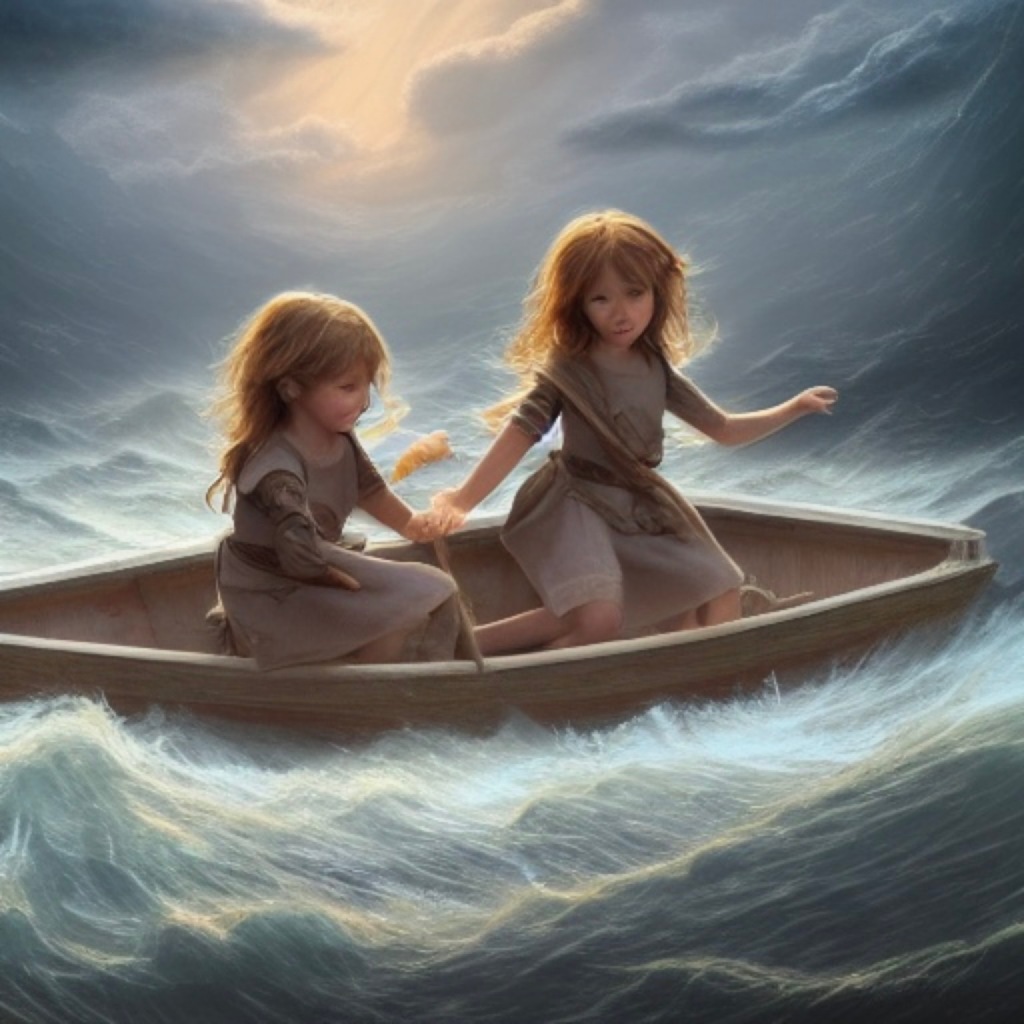

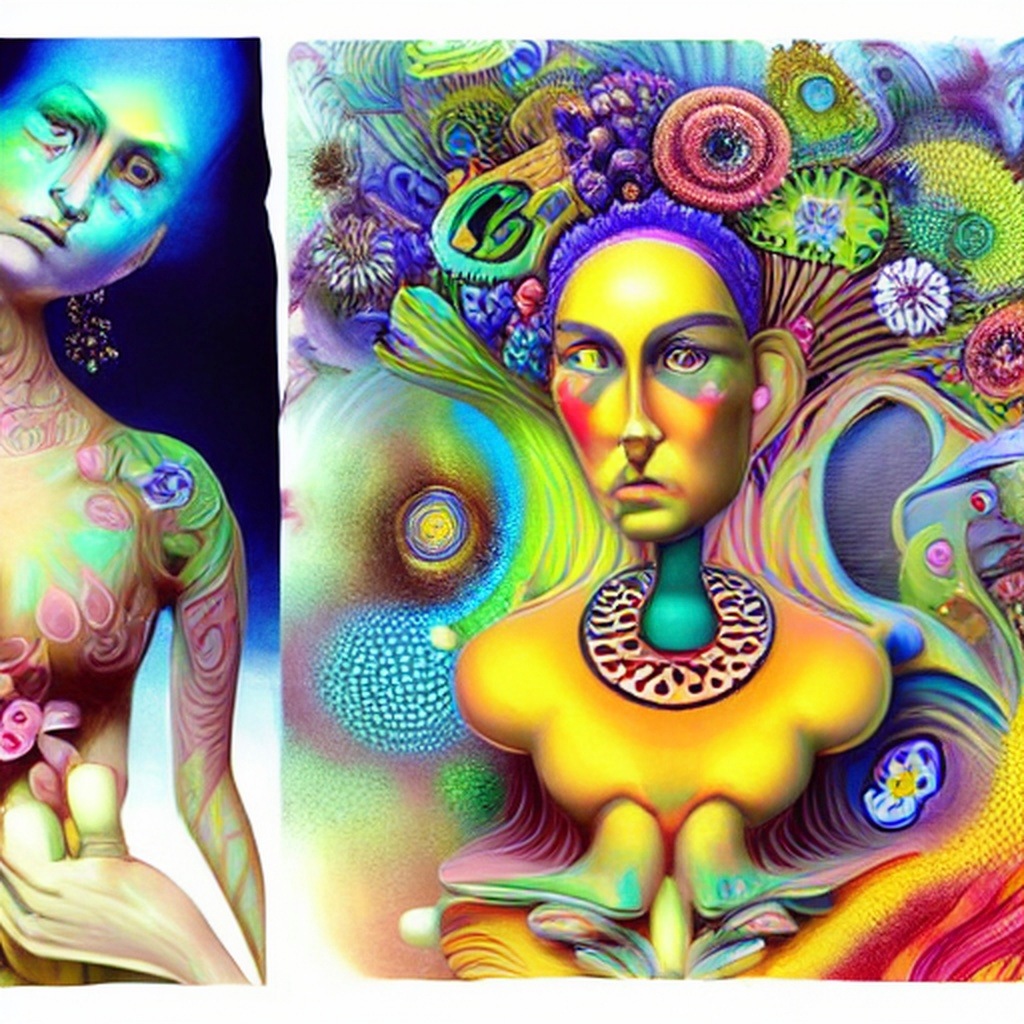
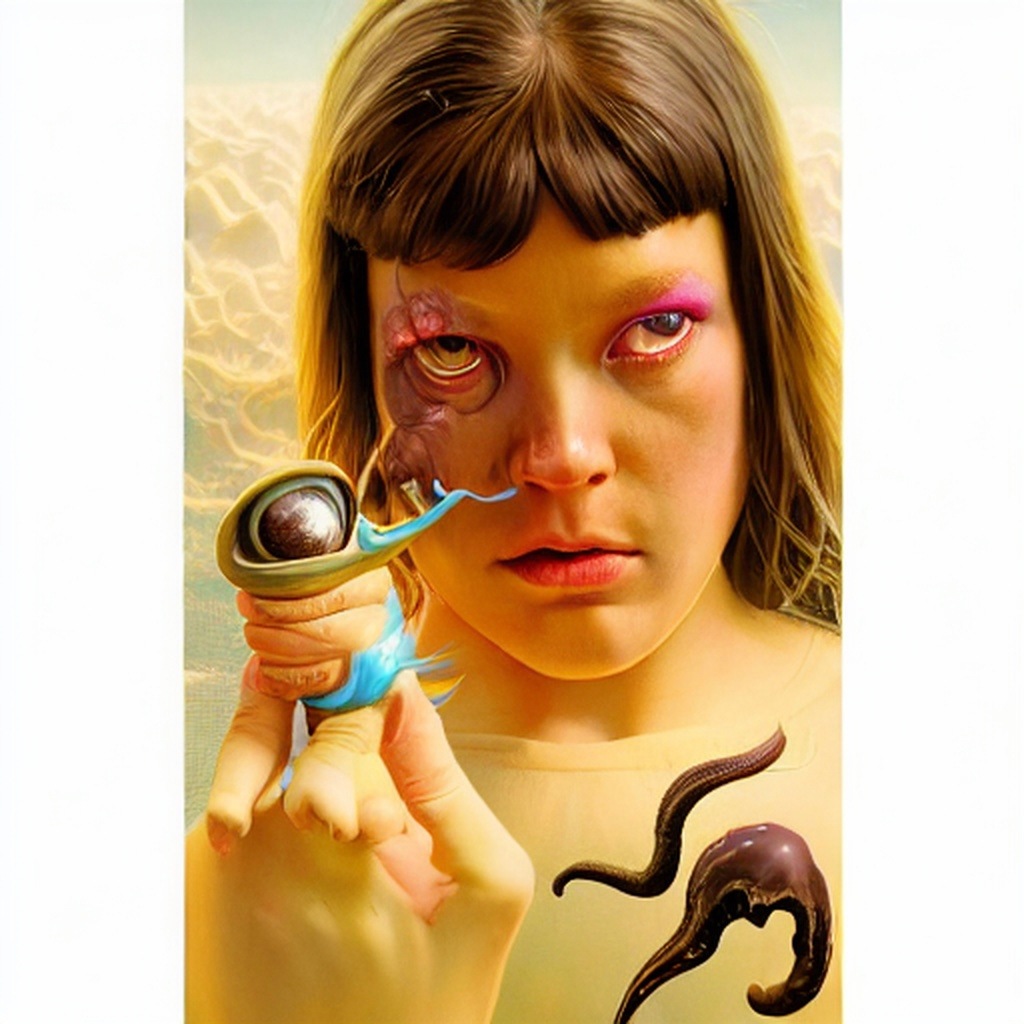
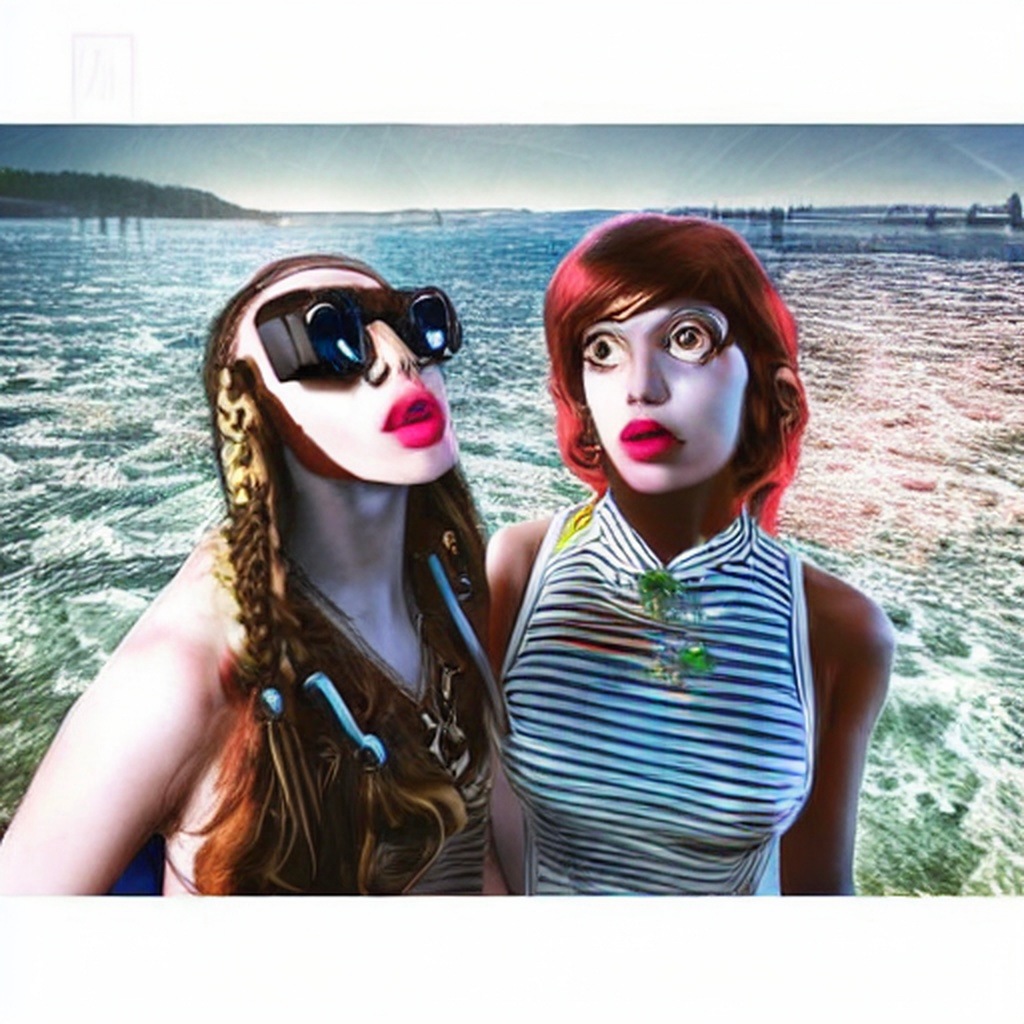

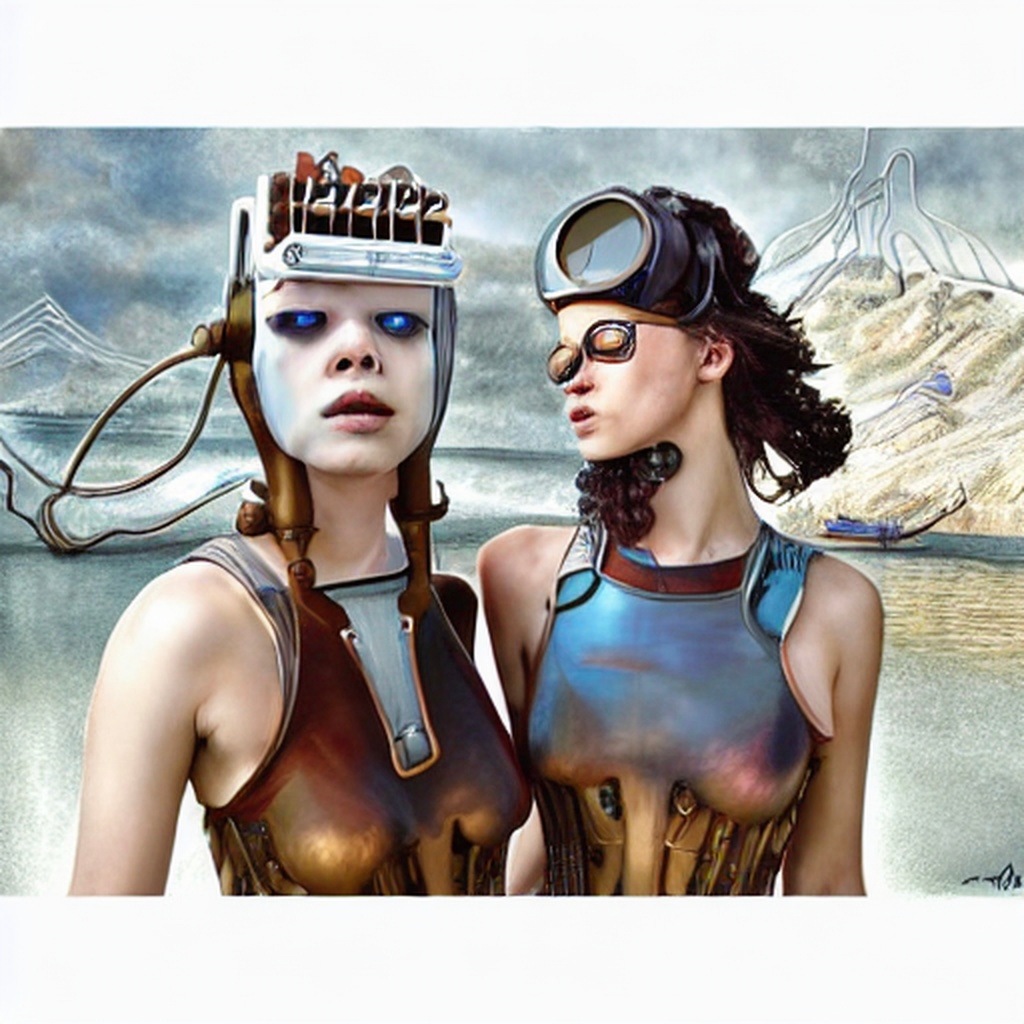
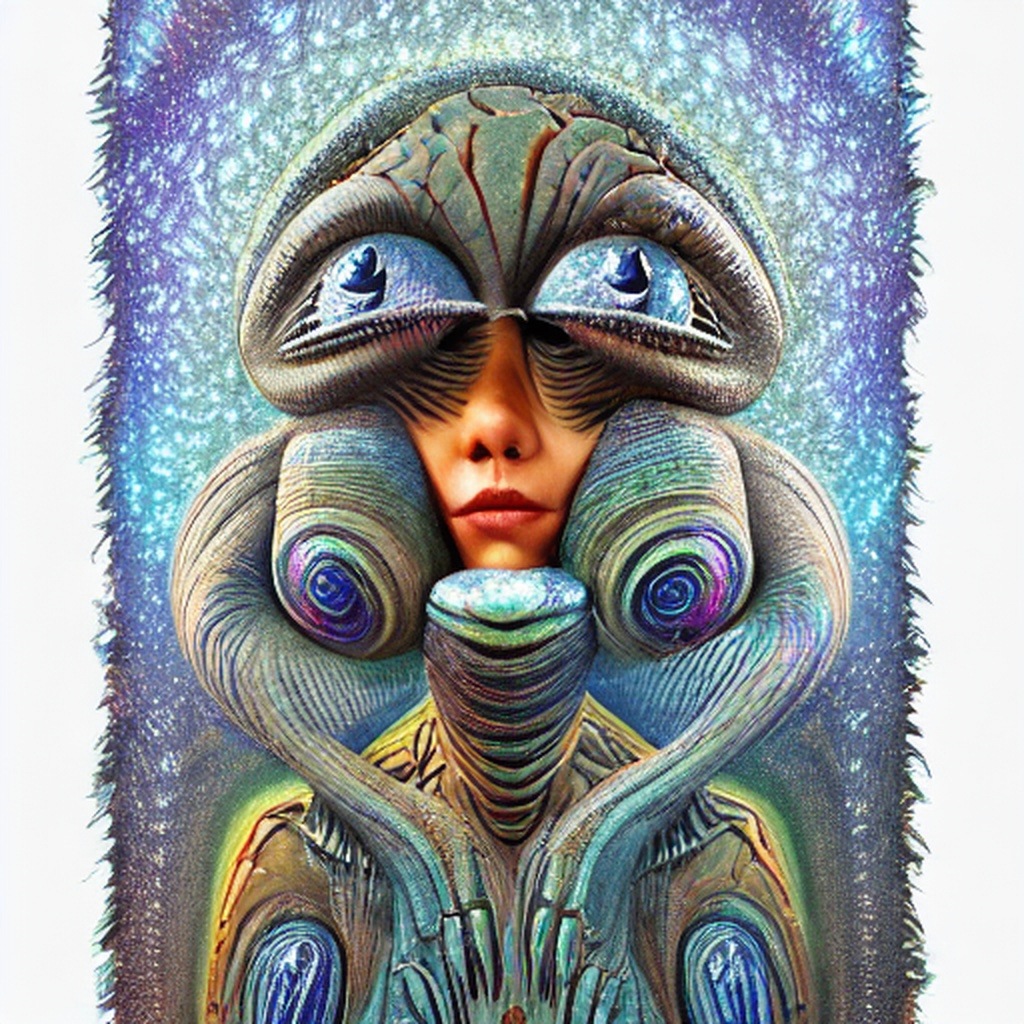


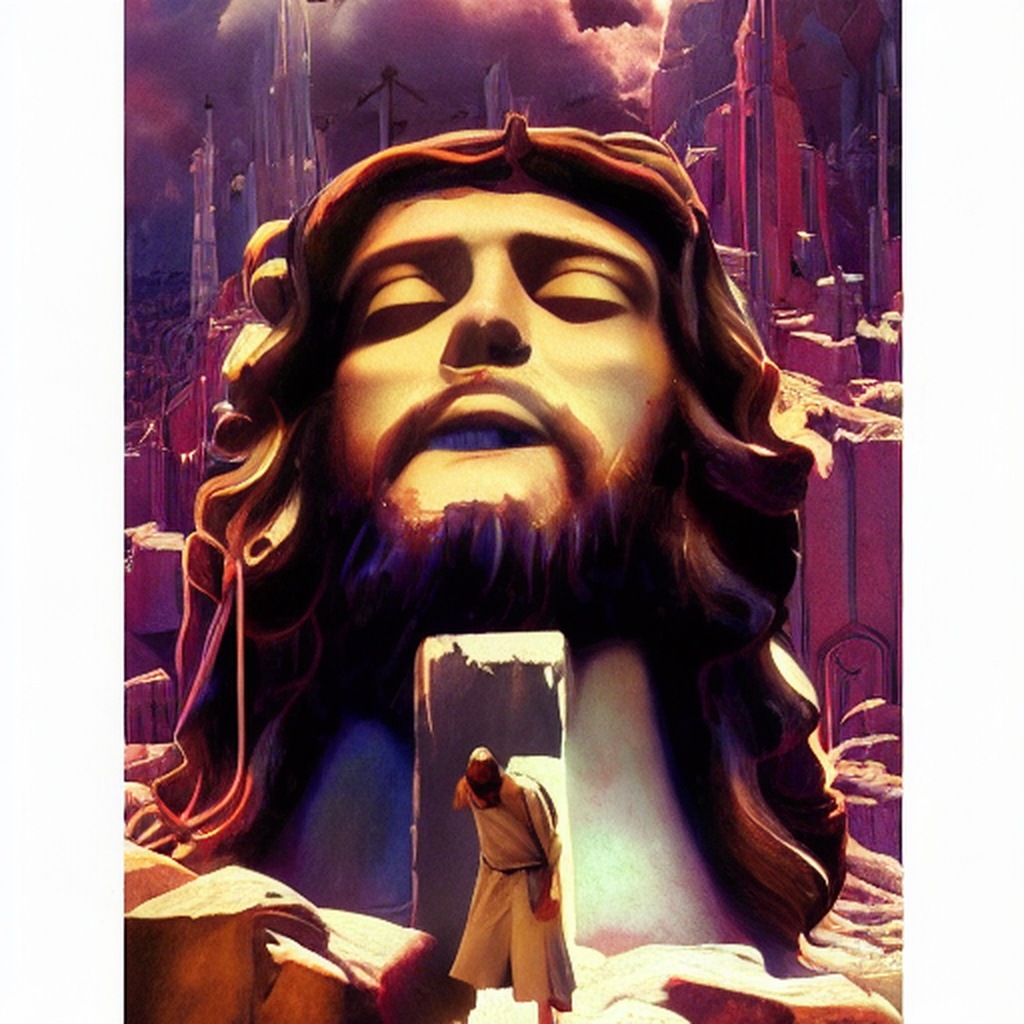
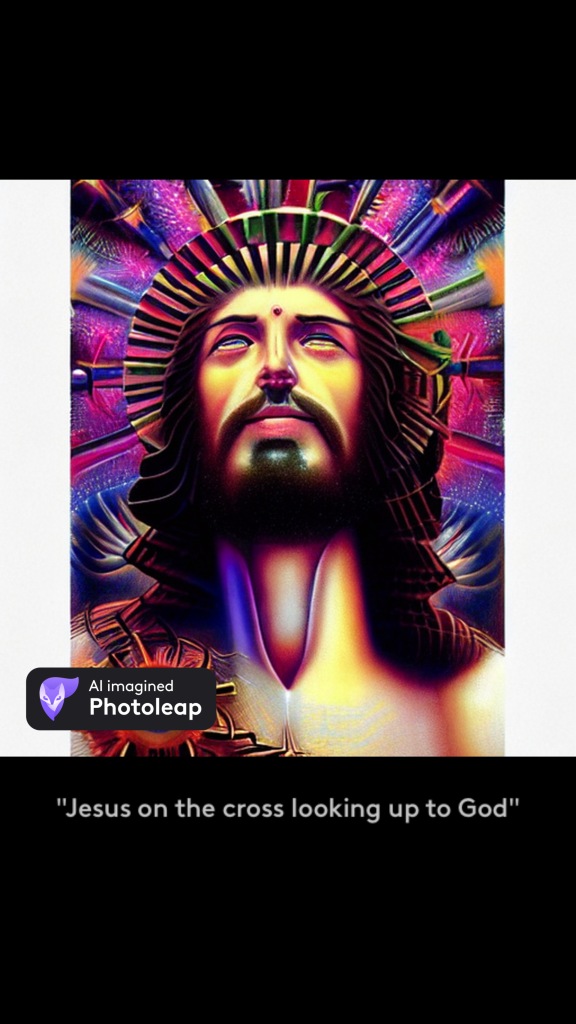
There is no doubt that the image generator created visually impressive images…many fairly creepy, some funny and some outright trippy. I really liked some of what I produced – especially the Jesus on the car image as it reminded me of the album covers from some of the 70’s bands I grew up listening to. However, overall, I can truly say that I do not look at any of the images I created as a work of art simply by putting descriptive words together into the generator. As an artist myself, I found the gratification in producing the final product fleeting…it only took about 10 seconds to produce a set of three images I could choose to ‘like’ before I was regenerating another set of images using a different filter. Great binge-worthy activity for my ADD brain, but not a true artistic endeavour that produced a body of work I could be proud of. Below is a painting I made from a photo from a book on photographer Julia Cameron. The likeness could not be considered a reproduction and could be considered my interpretation and is a playful exercise in color and shape and abstractionism.

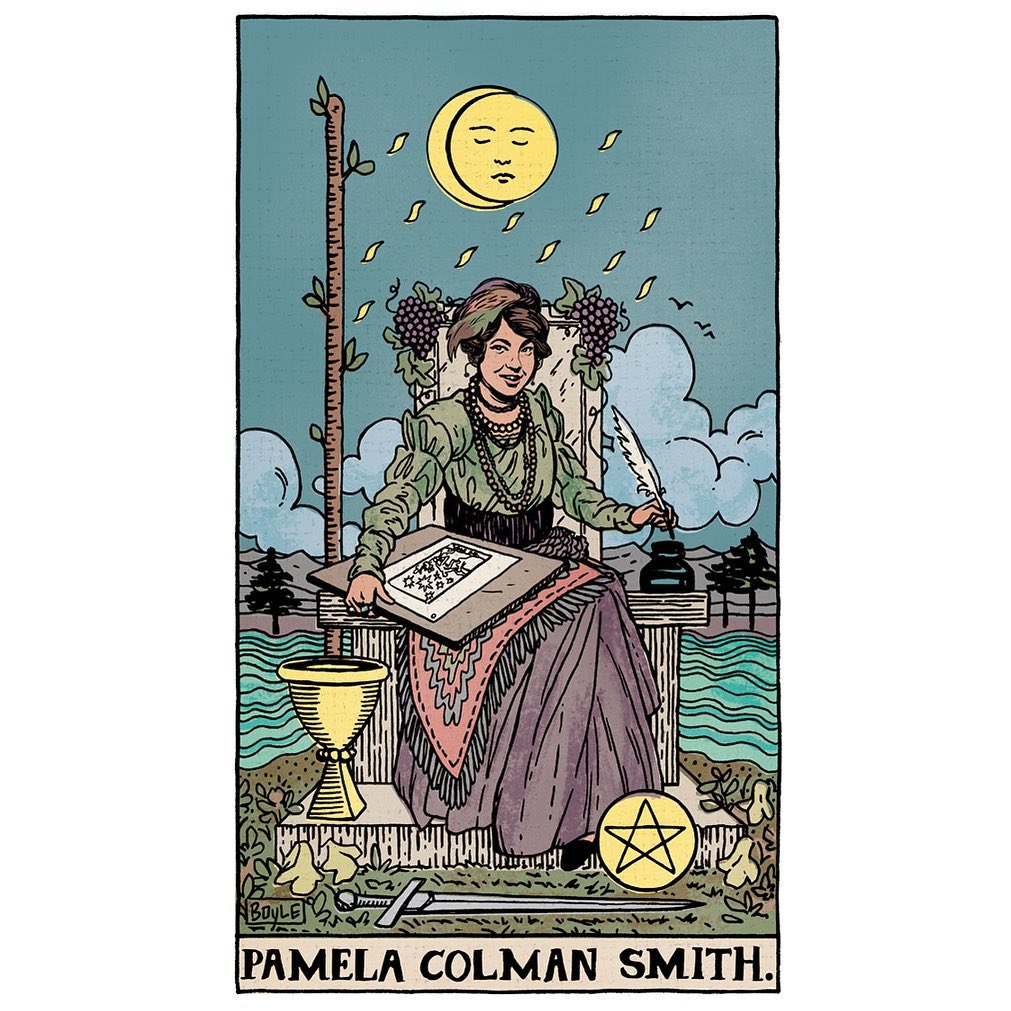
No one can be credited for the popularity of Tarot more in the current age than Pamela Colman-Smith (see the tarot card illustration by James Boyle above). She was the artist behind what is known as the Rider Smith Waite (originally Rider Waite) Tarot deck. Her illustrations were simple yet vastly layered with meaning and after 114 years after their creation they continue to tantalize readers and scholars of both the art and history of Tarot.
“The 78 illustrations that make up the Waite–Smith tarot deck “represent archetypal subjects that each become a portal to an invisible realm of signs and symbols, believed to be channeled through processes of divination.” They are original works of art and unique in terms of the cards’ stylization, draftsmanship, and composition, which is a significant aesthetic achievement.” They are one of the best examples of Smith’s imagination for fantasy, folly, ecstasy, death, and the macabre.[6] “– Wikipedia.
The spirit of Pamela “Pixie” Coleman-Smith calls to us today as Tarot readers, enthusiasts, collectors and creators. Her contribution to the meaning and endurability of the images and symbols across time, speaks to the ability of the artist to put herself, her ideas and values into her work. This brings me again to the subject of AI tarot decks making their way into Amazon and Etsy shops. While beautiful and visually engaging (and yes, some remain true to the RWS system), the symbolism is shallow, and it seems no story can be found in the cards, and there is no depth-psychology infused into the cards by the artist. As my amazing Fine Art student daughter would say (when critiquing her peers who have relied on AI art generators to make some of their pieces), “where are you in all this?”.
Some decks, like the Wild Moon tarot (image below), are simply gorgeous and it is obvious that the creator was mindful of balancing color theory and layout, while maintaining some of the essence of Tarot symbolism from the Rider Smith system, so that the reader could read the cards with little translation needed. See in the image below, the awkward blue bird in the ace of cups? It does remind us of the dove (aka Holy Spirit) descending into the cup (the Holy Grail) in the Ace of Cups from the RS Tarot deck, and it might seem that only the body of Christ is missing in the AI generated image. But is there a depth of meaning to all the parts of the image that when woven together it tells a story?
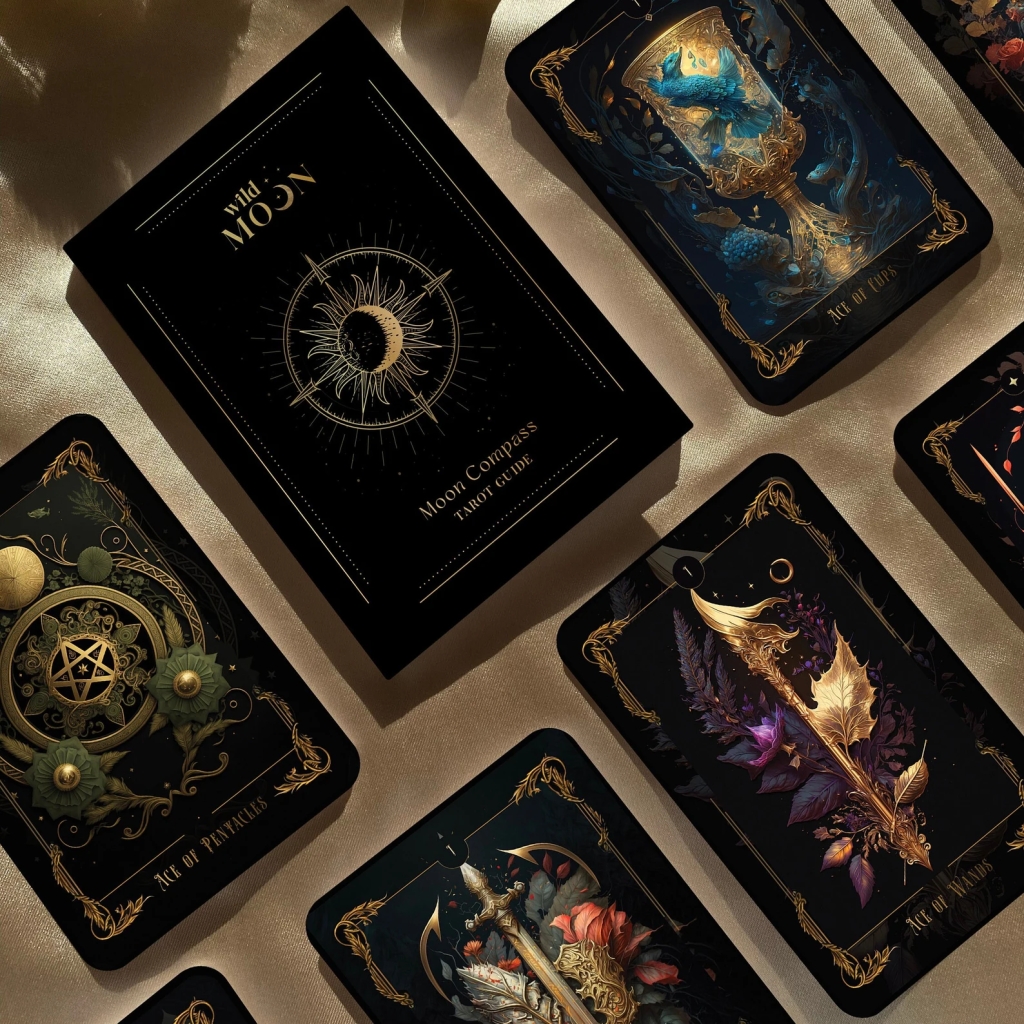
Ultimately, the guidebook is there to help frame the meaning of the AI generated card which may not seem to vary significantly from the traditional RS system, but I do perceive a lack of the ability of the creator/generator to convey meaning in the art. Who, after-all is the artist here? The computer program or the person who inputs the phrase or image to be generated?
An argument could be made that the jump to AI generated Tarot decks (and I would argue AI art in general) is the next logical progression on the timeline since the introduction of the computer and graphic art programs like Procreate and Adobe Illustrator to make artwork. Is it reasonable to classify AI Tarot decks differently than any other artist designed deck currently on the market today? Are AI creators so counter culture to other creators who make decks featuring animals (the Crow Tarot), mythical themes (WildWood Tarot, Dungeons and Dragons Tarot) or who focus on ideas such as gender identity (Star Spinner and Queer Tarot), BPOC (Melanated Tarot, Dust II Onyx Tarot), and who just want to have a bit of pop culture fun (like movies and TV shows such as Dark Crystal, Game of Thrones, and Stranger Things)? The answer, perhaps lies in the creators intention, and if art isn’t made to say something to the onlooker, then what is it good for?
AI generated artwork has a place in this weird world, if only for a short time. If we do not explore the various ways we can express a thought we become as guilty as the totalitarian Chinese regime responsible for oppressing Ai Weiwei and his family. Those consumers who wish to have a deeper connection to an artist through their art will choose them over the instant gratification of perfectly rendered computer generated images. Some art is made simply to be pretty and will beautifully decorate our homes and our lives, but the real value in artwork created by visionaries who make things from their imagination is that it speaks to our shared human experience; our collective joy and suffering. The artist sees into the human soul in a way that no computer will ever do. Humans will always choose the kind of art that whispers to us in our darkest hours…”where are you in this”?
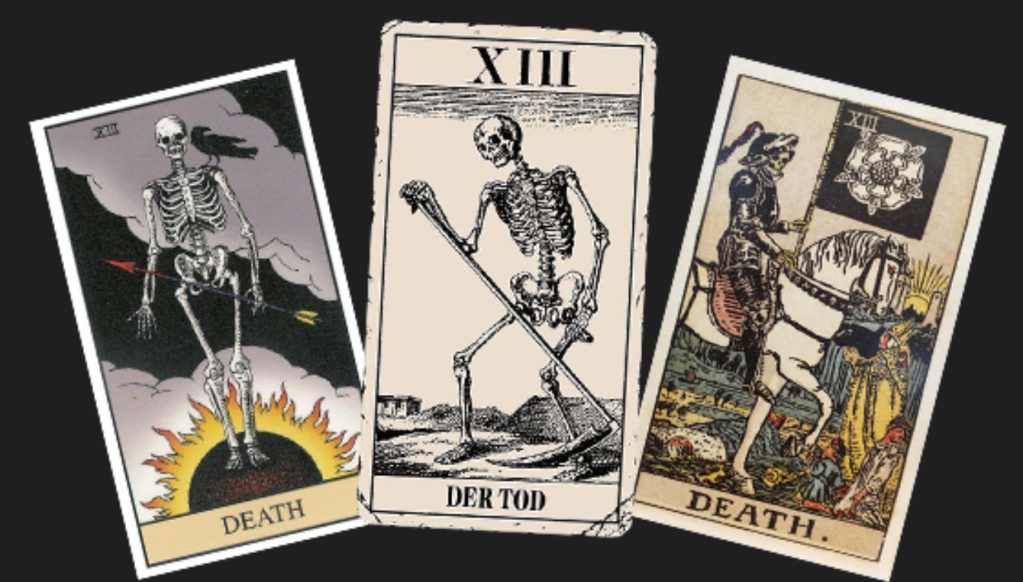


Leave a comment